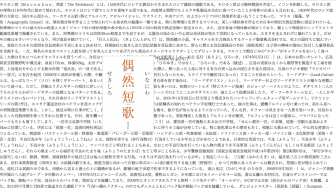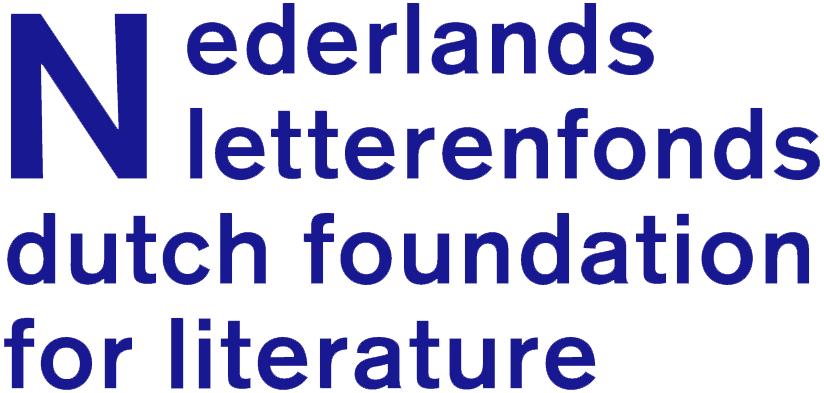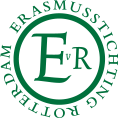Article
Do androids dream about electronic Tanka?
AI poetry in full bloom in Japan

November 06, 2018
Given this sort of passion to develop human hearts (rather than only minds) in the latest AI technology, it is not surprising to see the many attempts in Japan to create poems with AI. Here are some examples you can find in Japanese cyberspace:
Instant Tanka Generator ‘Inu-zaru’ (meaning ‘Dog-Monkey')
Five Tanka poems are automatically generated each time you click. There is no interaction with other readers, although you can post your favorite Tanka on Twitter. The only rule the site asks you to follow is to use ‘Hoshino Sizuru’ as author’s name. The generator uses 550 words (230 nouns, 150 modifiers, 150 predicates), and 20 types of sentence structures. Let’s try it and see the outputs:
運命に追われて君のともしびをたどってゆけば貧血の街
(Chased by the fate and following your light, I end up in a town of anemia)
鳥かごをおそれて秋のゆらめきをたしかめているよこしまな猿
(Fearful of a bird cage, a vicious monkey is checking on Autumn’s swing)
にぎやかなたとえ話から飛び出した夜の短歌を見るときの犬
(A dog looking at a night Tanka that jumped out of a lively metaphor)
Automatic Tanka & Haiku Generator
This site is more ‘interactive’ than ‘Inu-zaru’. It actually assists you in composing a Tanka by suggesting a phrase for each section of 5-7-5-7-7 syllables. It can also help you with Haiku, which is juses less syllables, 5-7-5, but requires using a word that indicates a season (季語 Kigo). You choose one of the four seasons, and the program provides you with a suggestion. I tried one Tanka and one winter Haiku:
一歩ずつわたし裸足で帰りたいおもりを載せた右によってる
(One step at a time, I want to go home with bare feet, leaning to the right where a weight is placed)
月を待つ乳房大きく落ちにけり
(A big breast, waiting for the moon, fell down)
Do I like them? Yes. Do I recognize some trace of myself in these? Perhaps. Would I have written them without AI assistance? Definitely not.
Accidental Tanka by Inaniwa and Sekishiro and here
These programmers fed their computer with the entire contents of the Japanese Wikipedia and ordered it to find a segment which happens to have a set of 5-7-5-7-7 syllables and can stand as a Tanka, though not an intentional one. The results are both hilarious and amazing.
「まゆあげ」の表情が付き、「そうなの?」とたずねるような表情となる
(While raising eyebrows, make an expression as if asking “Is that so?” – an excerpt from ‘Japanese Sign Language’ )
食したいイギリス人の船乗りが航海中に長持ちしない
(The English sailors who want to eat will not last long during a voyage – an excerpt from ‘Curry Rice’)
By the way, our obsession with this sort of ‘accidental Tanka’ is not a recent phenomenon. In the Tosa Diary, which was written in the mid-10th century by Kino Tsurayuki, there is a scene in which someone notices that an instruction uttered by the captain of the ship to the sailors sounded like a Tanka and when they counted the number of syllables, it was exactly 31 as the sum of 5-7-5-7-7!
Other sites include a project (led by a professor at Hokkaido University) to develop the deep-learning of AI on Haiku: they do it by asking the general public to choose the most appropriate image for a given Haiku poem. Professor Maki Kawamura, who is helping her AI learn about onomatopoeia, applied her research to compose a lyric for the idol (pop) group ‘Kamen Jyoshi (Masked Girls)’. Another professor, also in Hokkaido, is leading a project to have AI analyze the ultra-short stories of a famous SF writer, Shin-ichi Hoshi, so that it can create its own stories.
*
While the efforts to have AI create art involve diverse kinds of media and forms, when it comes to literature, Tanka and Haiku dominate the field in Japan. Why is that so? With this question in mind, I asked Yusuke Miyake for his views on AI generated Tanka.
Miyake, born in Tokyo, is a Tanka poet who also writes Haiku, Senryu (Haiku format without Kigo), Sedouka (5-7-7 / 5-7-7), Choka (literally meaning ‘Long Song’ repeating 5-7 a number of times and ending with 7). He also occasionally writes free-form poems. His 2017 book of literary criticism Karon (Tanka Poetics) includes a chapter titled “Does an android dream about electronic Tanka? – a study of AI, Tanka and surrealism”. In this essay, he examines AI generated Tanka and compared them with the human Tanka written in a surrealistic style.
Do you see common characteristics among AI generated Tanka?
Miyake: They are all different depending on the algorithm and vocabularies used for each program. If you input large samples for each part of 5-7-5-7-7 and shuffle them, the results are nonsensical and often incomprehensible. But occasionally, you get something really strange, even a mind-blowing image. If, on the other hand, you (humans) make the top part (5-7-7) and the bottom part (7-7) beforehand and shuffle them, the result would be closer to human-made Tanka. But then AI would simply continue to bang the two parts together forever. It is understandable but the destructive charm of accidental contrast is lost. Having said that, AI Tanka in general is linear, meaning it goes from the first 5 to the last 7 in one direction without having any semantic interactions between sections.
How does it compare to the surrealistic Tanka?
Miyake: Take the Tanka of Katsumi Kato (1915-2010), who practiced automatism, as an example:
柱の傷に黒い花さく曇日は襤褸の下で身をくねらせる
The cloudy day that blooms in a scar of the pillar twists and turns under the tattered clothes
からまるむらさきのけむりかきいだき回転するひとへしずかに近よる
Approaching quietly towards a person who rotates holding the tangled smoke of purple
Despite his use of automatism or perhaps rather because of it, there is semantic interaction in between each part of these Tanka. Unlike AI generated Tanka, you feel some presence behind the text that integrates each part, and that presence is something that should be called human unconsciousness or simply humanity. Our unconscious does not mean “no consciousness”. It is rather a desire or impulse that drives us against our intelligence or common sense. But a computer has literally no consciousness. You can feel the difference by comparing Kato’s Tanka with those of AI.
What kind of future do you expect for AI and Tanka?
Miyake: It is possible that the very definition of ‘making Tanka’ will change as AI gets more and more sophisticated. Humans will give ‘commands’ to AI for style, such as realism or surrealism, contemporary spoken language or ancient written language, colorful words or monochrome. The authorship would then be found not in the text that is generated by AI, but rather in the those ‘commands’ themselves and the process of editing and selecting the final work.
Is it the case only for the fixed form verse, such as Tanka or Haiku? Or do you think the scenario is also possible for the free form verse?
Miyake: Are you suggesting that only a human can write the free form verse, whereas even an AI can handle the fixed form? You may wish to think that way, yourself being a free form poet. And it is true that Tanka or Haiku is a lot easier for AI because of their shortness and clear rules. Fixed form itself is a sort of algorithm, come to think of it. But in the end, I believe there is no essential difference between the two. Eventually, AI will come up with the way to choose the length and the particular style for a given free form verse, then apply that template to itself. We humans will then take the role of setting the parameters and fine-tuning, as a producer/editor. At the same time, AI generated Tanka and Haiku will continue to require human intervention for the foreseeable future. Either way, we will be in a collaborative partnership with AI.
Together with your essay on AI generated Tanka, you published a series of Tanka titled “Tanka written by AI which pretends to be Yusuke Miyake'. [Examples below] How did you come up with the idea and what was your motive behind it?
焼き鳥の串突きつけて説教をするヒトの目の焦点合はず
He who preaches with the tip of a Yaktori (chicken barbecue) skewer pointing at me, his eyes are not in focus
その人の目をよく見ればその眼窩ぽつかりとしたる空洞なりけり
Looking closely at his eyes, I find the eye sockets are just empty hollows
焼き鳥の頭部は透けてその脳に人工知能が埋め込めてあり
The head of Yakitori is transparent, buried in its brain is an artificial intelligence
Including several self-referential Tanka:
焼き鳥が短歌を歌へば五七調ならで二進法であるなり
When Yakitori composes Tanka, it would not be in 5-7 rhythm but in the binary system
短歌これ二進法で進む時歌やがて縄文語に近づく
As Tanka goes in the binary system, it gets closer to the Japanese language from the prehistoric Jyomon period
Miyake: I was thinking about the possibility of a Tanka-match between humans and AI. For example, both sides make Tanka on the topic of Spring, Summer, Autumn and Winter, and without knowing which is which, readers will vote for their favorites. I then thought what if I make Tanka pretending to be AI and AI makes Tanka pretending to be me. Which Tanka would be better? It was a sort of the thought experiment to understand what is essential to human Tanka, or what makes me a human, not AI.
And what was your finding?
Miyake: I believe, in the end, it is the desire to write or sing that separates human from AI. We have this deep desire from which we can not escape. AI could write as well as, or even better than, human, but they can not feel this urge. In other words, when they are finally able to feel it, they are no longer AI but human just like us.
Click here to view a November 27 event in London with Abol Froushan (in person) discussing AI poetry, with Yasuhiro Yotsumoto and Eran Hadas via video.
“You feel some presence behind the text that integrates each part, and that presence is something that should be called human unconsciousness or simply humanity... Our unconscious does not mean ‘no consciousness’. I believe, in the end, it is the desire to write or sing that separates human from AI.” – Yusuke Miyake
Japanese love new technology but we also want the technology to have the touch of a human heart. When Sony launched Aibo, an interactive robot dog, in 1999, people took it not as a technological novelty but a real pet. (The name Aibo comes from the Japanese word, 相棒(aiboh) meaning ‘partner’). In 2014, Softbank launched Pepper, a semi-humanoid robot with “emotion recognition capability”. You can see these robots at work in the reception areas of hospitals and banks in Japan.Given this sort of passion to develop human hearts (rather than only minds) in the latest AI technology, it is not surprising to see the many attempts in Japan to create poems with AI. Here are some examples you can find in Japanese cyberspace:
Instant Tanka Generator ‘Inu-zaru’ (meaning ‘Dog-Monkey')
Five Tanka poems are automatically generated each time you click. There is no interaction with other readers, although you can post your favorite Tanka on Twitter. The only rule the site asks you to follow is to use ‘Hoshino Sizuru’ as author’s name. The generator uses 550 words (230 nouns, 150 modifiers, 150 predicates), and 20 types of sentence structures. Let’s try it and see the outputs:
運命に追われて君のともしびをたどってゆけば貧血の街
(Chased by the fate and following your light, I end up in a town of anemia)
鳥かごをおそれて秋のゆらめきをたしかめているよこしまな猿
(Fearful of a bird cage, a vicious monkey is checking on Autumn’s swing)
にぎやかなたとえ話から飛び出した夜の短歌を見るときの犬
(A dog looking at a night Tanka that jumped out of a lively metaphor)
Automatic Tanka & Haiku Generator
This site is more ‘interactive’ than ‘Inu-zaru’. It actually assists you in composing a Tanka by suggesting a phrase for each section of 5-7-5-7-7 syllables. It can also help you with Haiku, which is juses less syllables, 5-7-5, but requires using a word that indicates a season (季語 Kigo). You choose one of the four seasons, and the program provides you with a suggestion. I tried one Tanka and one winter Haiku:
一歩ずつわたし裸足で帰りたいおもりを載せた右によってる
(One step at a time, I want to go home with bare feet, leaning to the right where a weight is placed)
月を待つ乳房大きく落ちにけり
(A big breast, waiting for the moon, fell down)
Do I like them? Yes. Do I recognize some trace of myself in these? Perhaps. Would I have written them without AI assistance? Definitely not.
Accidental Tanka by Inaniwa and Sekishiro and here
These programmers fed their computer with the entire contents of the Japanese Wikipedia and ordered it to find a segment which happens to have a set of 5-7-5-7-7 syllables and can stand as a Tanka, though not an intentional one. The results are both hilarious and amazing.
「まゆあげ」の表情が付き、「そうなの?」とたずねるような表情となる
(While raising eyebrows, make an expression as if asking “Is that so?” – an excerpt from ‘Japanese Sign Language’ )
食したいイギリス人の船乗りが航海中に長持ちしない
(The English sailors who want to eat will not last long during a voyage – an excerpt from ‘Curry Rice’)
By the way, our obsession with this sort of ‘accidental Tanka’ is not a recent phenomenon. In the Tosa Diary, which was written in the mid-10th century by Kino Tsurayuki, there is a scene in which someone notices that an instruction uttered by the captain of the ship to the sailors sounded like a Tanka and when they counted the number of syllables, it was exactly 31 as the sum of 5-7-5-7-7!
Other sites include a project (led by a professor at Hokkaido University) to develop the deep-learning of AI on Haiku: they do it by asking the general public to choose the most appropriate image for a given Haiku poem. Professor Maki Kawamura, who is helping her AI learn about onomatopoeia, applied her research to compose a lyric for the idol (pop) group ‘Kamen Jyoshi (Masked Girls)’. Another professor, also in Hokkaido, is leading a project to have AI analyze the ultra-short stories of a famous SF writer, Shin-ichi Hoshi, so that it can create its own stories.
*
While the efforts to have AI create art involve diverse kinds of media and forms, when it comes to literature, Tanka and Haiku dominate the field in Japan. Why is that so? With this question in mind, I asked Yusuke Miyake for his views on AI generated Tanka.
Miyake, born in Tokyo, is a Tanka poet who also writes Haiku, Senryu (Haiku format without Kigo), Sedouka (5-7-7 / 5-7-7), Choka (literally meaning ‘Long Song’ repeating 5-7 a number of times and ending with 7). He also occasionally writes free-form poems. His 2017 book of literary criticism Karon (Tanka Poetics) includes a chapter titled “Does an android dream about electronic Tanka? – a study of AI, Tanka and surrealism”. In this essay, he examines AI generated Tanka and compared them with the human Tanka written in a surrealistic style.
Do you see common characteristics among AI generated Tanka?
Miyake: They are all different depending on the algorithm and vocabularies used for each program. If you input large samples for each part of 5-7-5-7-7 and shuffle them, the results are nonsensical and often incomprehensible. But occasionally, you get something really strange, even a mind-blowing image. If, on the other hand, you (humans) make the top part (5-7-7) and the bottom part (7-7) beforehand and shuffle them, the result would be closer to human-made Tanka. But then AI would simply continue to bang the two parts together forever. It is understandable but the destructive charm of accidental contrast is lost. Having said that, AI Tanka in general is linear, meaning it goes from the first 5 to the last 7 in one direction without having any semantic interactions between sections.
How does it compare to the surrealistic Tanka?
Miyake: Take the Tanka of Katsumi Kato (1915-2010), who practiced automatism, as an example:
柱の傷に黒い花さく曇日は襤褸の下で身をくねらせる
The cloudy day that blooms in a scar of the pillar twists and turns under the tattered clothes
からまるむらさきのけむりかきいだき回転するひとへしずかに近よる
Approaching quietly towards a person who rotates holding the tangled smoke of purple
Despite his use of automatism or perhaps rather because of it, there is semantic interaction in between each part of these Tanka. Unlike AI generated Tanka, you feel some presence behind the text that integrates each part, and that presence is something that should be called human unconsciousness or simply humanity. Our unconscious does not mean “no consciousness”. It is rather a desire or impulse that drives us against our intelligence or common sense. But a computer has literally no consciousness. You can feel the difference by comparing Kato’s Tanka with those of AI.
What kind of future do you expect for AI and Tanka?
Miyake: It is possible that the very definition of ‘making Tanka’ will change as AI gets more and more sophisticated. Humans will give ‘commands’ to AI for style, such as realism or surrealism, contemporary spoken language or ancient written language, colorful words or monochrome. The authorship would then be found not in the text that is generated by AI, but rather in the those ‘commands’ themselves and the process of editing and selecting the final work.
Is it the case only for the fixed form verse, such as Tanka or Haiku? Or do you think the scenario is also possible for the free form verse?
Miyake: Are you suggesting that only a human can write the free form verse, whereas even an AI can handle the fixed form? You may wish to think that way, yourself being a free form poet. And it is true that Tanka or Haiku is a lot easier for AI because of their shortness and clear rules. Fixed form itself is a sort of algorithm, come to think of it. But in the end, I believe there is no essential difference between the two. Eventually, AI will come up with the way to choose the length and the particular style for a given free form verse, then apply that template to itself. We humans will then take the role of setting the parameters and fine-tuning, as a producer/editor. At the same time, AI generated Tanka and Haiku will continue to require human intervention for the foreseeable future. Either way, we will be in a collaborative partnership with AI.
Together with your essay on AI generated Tanka, you published a series of Tanka titled “Tanka written by AI which pretends to be Yusuke Miyake'. [Examples below] How did you come up with the idea and what was your motive behind it?
焼き鳥の串突きつけて説教をするヒトの目の焦点合はず
He who preaches with the tip of a Yaktori (chicken barbecue) skewer pointing at me, his eyes are not in focus
その人の目をよく見ればその眼窩ぽつかりとしたる空洞なりけり
Looking closely at his eyes, I find the eye sockets are just empty hollows
焼き鳥の頭部は透けてその脳に人工知能が埋め込めてあり
The head of Yakitori is transparent, buried in its brain is an artificial intelligence
Including several self-referential Tanka:
焼き鳥が短歌を歌へば五七調ならで二進法であるなり
When Yakitori composes Tanka, it would not be in 5-7 rhythm but in the binary system
短歌これ二進法で進む時歌やがて縄文語に近づく
As Tanka goes in the binary system, it gets closer to the Japanese language from the prehistoric Jyomon period
Miyake: I was thinking about the possibility of a Tanka-match between humans and AI. For example, both sides make Tanka on the topic of Spring, Summer, Autumn and Winter, and without knowing which is which, readers will vote for their favorites. I then thought what if I make Tanka pretending to be AI and AI makes Tanka pretending to be me. Which Tanka would be better? It was a sort of the thought experiment to understand what is essential to human Tanka, or what makes me a human, not AI.
And what was your finding?
Miyake: I believe, in the end, it is the desire to write or sing that separates human from AI. We have this deep desire from which we can not escape. AI could write as well as, or even better than, human, but they can not feel this urge. In other words, when they are finally able to feel it, they are no longer AI but human just like us.
Click here to view a November 27 event in London with Abol Froushan (in person) discussing AI poetry, with Yasuhiro Yotsumoto and Eran Hadas via video.
© Yasuhiro Yotsumoto
Sponsors
























